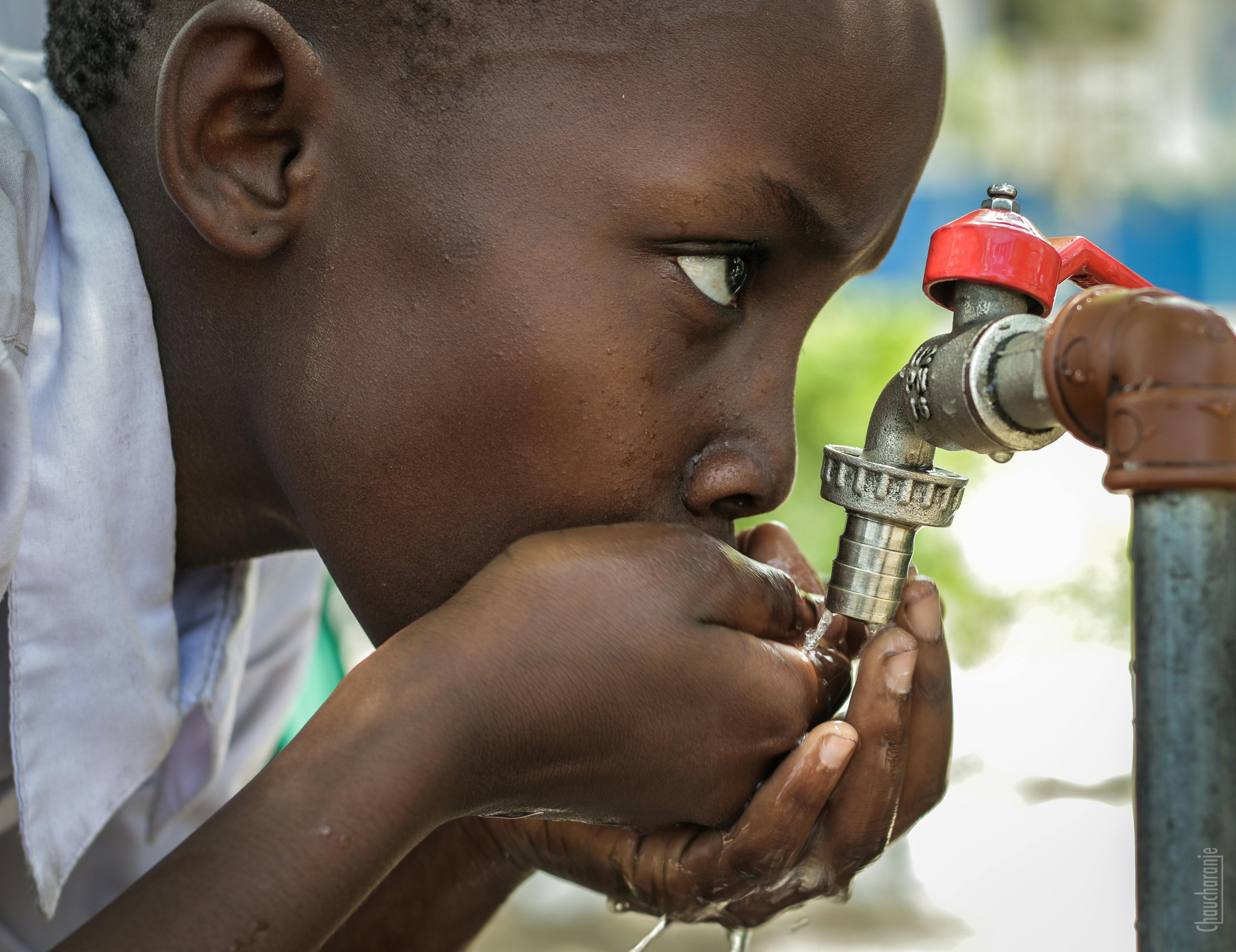With so many different types of water on the market, it can be confusing to know the difference between purified drinking water and distilled water. To help you understand, this article will provide an overview of what makes each type of water unique. It will discuss the differences in the processes used to purify and distill water, as well as their respective benefits. Finally, it will provide some guidance on when to use each type of water and why.Purified drinking water is water that has been treated to remove impurities, contaminants, and other substances that may be hazardous to your health. The process of purifying water typically includes filtration, sedimentation, distillation, and other treatments to remove chemicals, heavy metals, bacteria, parasites, and other contaminants. Purified drinking water is generally safe for human consumption and is often recommended over tap or bottled water for general use.
Distilled Water
Distilled water is a type of purified water that has had both contaminants and minerals removed. It is produced by a process of distillation, which involves boiling the water and then condensing the steam back into a liquid. This process eliminates impurities and any other substances, such as bacteria, viruses, or heavy metals, that may be present in the original water source. Distilled water is often used in medical settings, where it is critical to have pure water for sterilization and other purposes. It can also be used for drinking if it is free of contaminants and impurities. In some cases, distilled water can be used to make beverages such as coffee or tea taste smoother or more flavorful.
The Difference in Source of Water
Water is an essential part of all living organisms and is essential for life. The source of water for different applications varies and so does its quality, depending on the source. There are three primary sources of water – surface water, ground water, and recycled water.
Surface water is found in streams, rivers, lakes, and reservoirs. This type of water generally requires minimal treatment to make it suitable for drinking and other uses. However, surface water can contain pollutants such as bacteria, viruses, and chemicals from industrial sources that require additional treatment before it can be used safely.
Groundwater is located beneath the ground’s surface and is usually found in aquifers. This type of water often contains fewer pollutants than surface water but may contain contaminants from agricultural runoff or industrial sites that need to be removed before it can be used safely.
Recycled water is wastewater that has been treated to remove solid materials and contaminants before being reused. It is typically used for irrigation or landscaping purposes but can also be used for drinking if it has gone through a rigorous treatment process to remove any harmful bacteria or chemicals.
Each type
Distillation vs Filtration
Distillation and filtration are two common purification processes used to separate components of a mixture. Distillation involves heating the mixture so that the components with higher boiling points can be collected as vapor, while filtration uses a filter membrane or other medium to physically separate the components of the mixture. Both processes are useful for purification, but there are distinct differences between them.
Distillation
Distillation is a physical process that relies on differences in boiling points between components of a mixture. The mixture is heated until it boils and then the vapors are cooled and condensed into liquid form. This liquid will contain only those components with higher boiling points than others in the mixture, allowing for selective removal of certain substances. Distillation is often used to purify liquids such as water, alcohol, or essential oils.
Filtration
Filtration is a physical process that relies on differences in particle size between components of a mixture. A filter medium such as paper or cloth is used to separate particles by size, allowing larger particles to be removed from the solution. This process
Difference in Mineral Content
The mineral content of a food is an important factor to consider when making dietary choices. Different foods have different levels of minerals, and this can affect how nutritious they are. For example, foods that are high in calcium, such as dairy products, are important for maintaining strong bones and teeth. On the other hand, foods that are high in iron, such as green leafy vegetables, are important for keeping the body healthy. It is therefore important to know the difference between foods with different mineral content so you can make informed dietary choices.
The amount of minerals present in a food depends on various factors including the soil it was grown in and its exposure to sunlight. For example, spinach grown in nutrient-rich soil will have higher levels of minerals than spinach grown in depleted soil. Similarly, food that has been exposed to direct sunlight will have higher levels of Vitamin D than food that has been kept away from direct sunlight. It is therefore important to understand the environmental conditions under which a food is grown or processed so you can make an informed decision about its nutritional value.
Another factor that affects mineral content is processing

Taste Differences between Purified and Distilled Water
The taste of purified and distilled water can be quite different. Purified water has been filtered to remove impurities, such as bacteria, chemicals, and other elements. Depending on the type of filter used, the water may have a slightly different taste. On the other hand, distilled water has been boiled to remove contaminants. This process leaves behind minerals that give it a slightly different flavor than purified water.
When comparing the two types of water, it is important to consider how they are processed. Purified water goes through a filtering process that removes impurities from the source. The most common type of filtration used is reverse osmosis, which forces the water through a semi-permeable membrane to remove impurities such as bacteria and chemicals. The resulting water is usually clean and free from any unwanted elements or tastes.
Distilled water is created by boiling contaminated source water until all of its contaminants are eliminated. This leaves behind minerals such as calcium and magnesium that give it a slightly different flavor than purified drinking water. Distilled water also lacks the beneficial minerals found in purified drinking
The Health Benefits of Purified and Distilled Water
Drinking purified and distilled water is key to healthy living. The water is free of impurities that can cause health problems. Purified and distilled water has been used for centuries to help treat a variety of ailments. It helps flush toxins from the body, improve digestion, improve skin tone, and reduce inflammation. It also helps maintain a healthy balance of electrolytes in the body, which is important for overall health.
One of the most important benefits of drinking purified and distilled water is that it provides the body with essential minerals. Minerals such as calcium, magnesium, potassium, sodium, chloride, and sulphur are all found in purified and distilled water. These minerals help keep your bones strong and your muscles functioning properly. They also help regulate blood pressure levels, keep your heart healthy, and support other organs in the body.
Another benefit of drinking purified and distilled water is that it helps boost the immune system. When toxins are removed from the body through purifying or distilling processes, it allows your immune system to function more effectively. This can lead to improved overall
Cost Comparison of Purified and Distilled Water
When it comes to cost, purified and distilled water are two popular choices for drinking water. Both types of water go through different processes to remove contaminants. However, they also differ in price. Purified water is generally more affordable than distilled water, so it’s important to compare the costs before making a purchase.
The cost of purified water depends on the type of filtration system used. Some systems use reverse osmosis or activated carbon filters to remove impurities from tap or well water. These systems are often more expensive than those that use ultraviolet light or chemical treatments. In addition, the cost of replacement filters and maintenance can add up over time.
Distilled water is typically more expensive than purified water because it involves a more involved process. Distillation involves boiling and condensing the steam produced by boiling to create pure, contaminant-free drinking water. The cost of distillation equipment can be quite high, but many people find it worth the investment because of its superior purity and taste.
When comparing the cost of purified and distilled water, it’s important to factor in ongoing maintenance costs as well

Conclusion
Purified drinking water and distilled water are both forms of treated water, and they both have different benefits. Purified drinking water removes impurities, while distilled water removes both impurities and minerals. Purified drinking water is generally used for everyday consumption and cooking, while distilled water is most often used for medical purposes or to fill car batteries. In conclusion, it is important to understand the differences between purified drinking water and distilled water in order to make an informed decision about which one is right for you.
Both types of treated water offer many advantages, but it is important to understand their differences so that you can choose the best option for your needs. Ultimately, purified drinking water and distilled water can be beneficial, depending on your specific situation.

